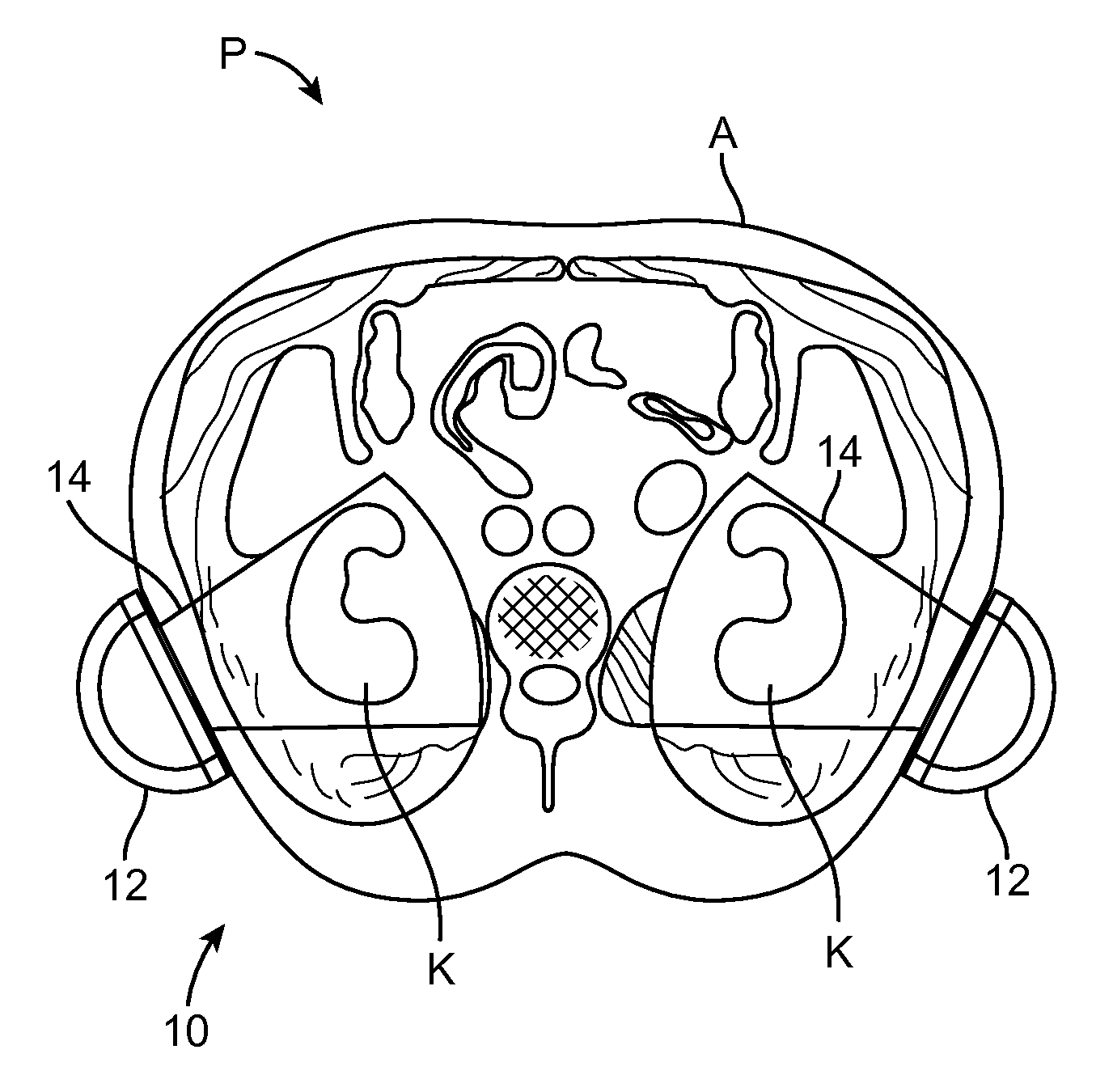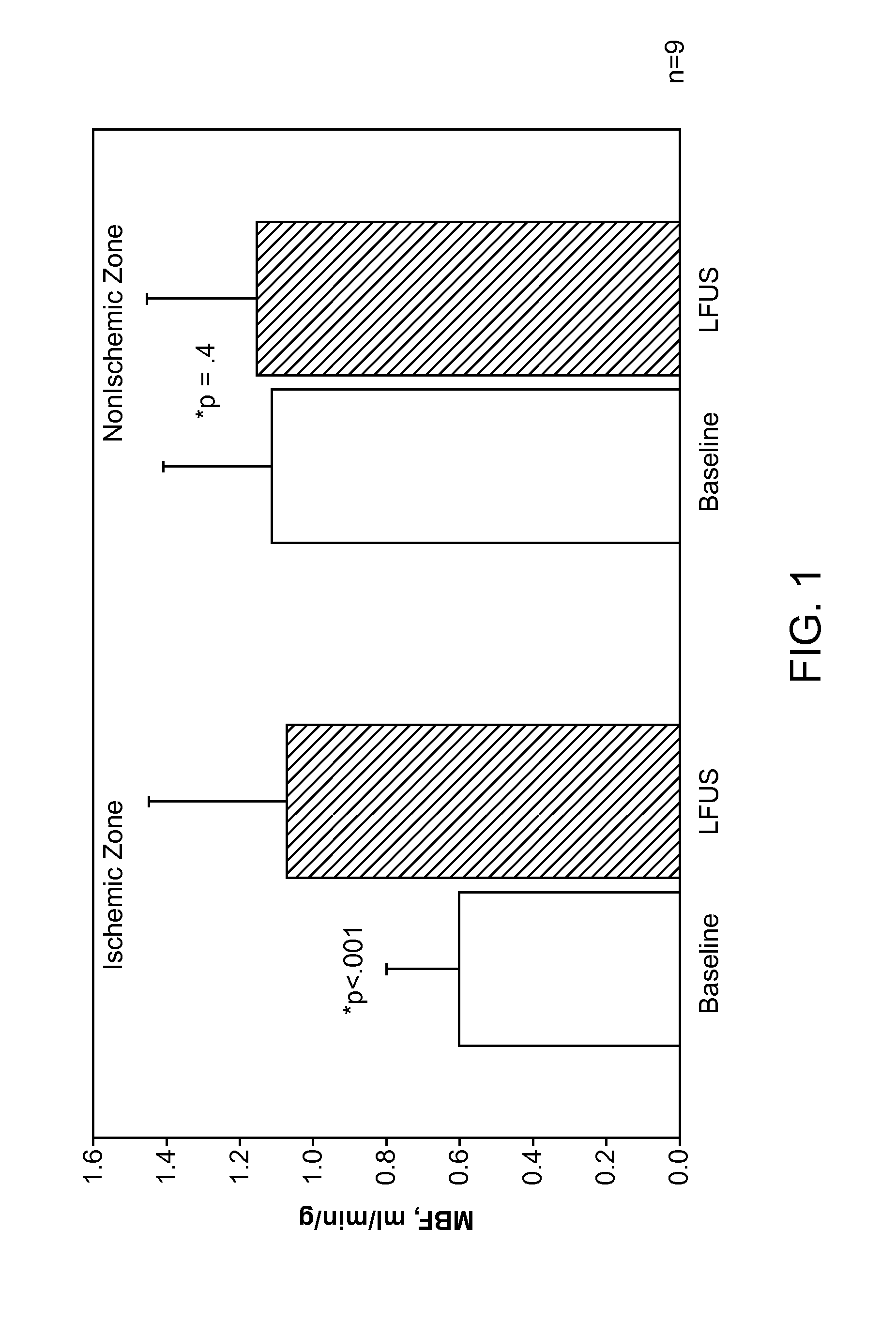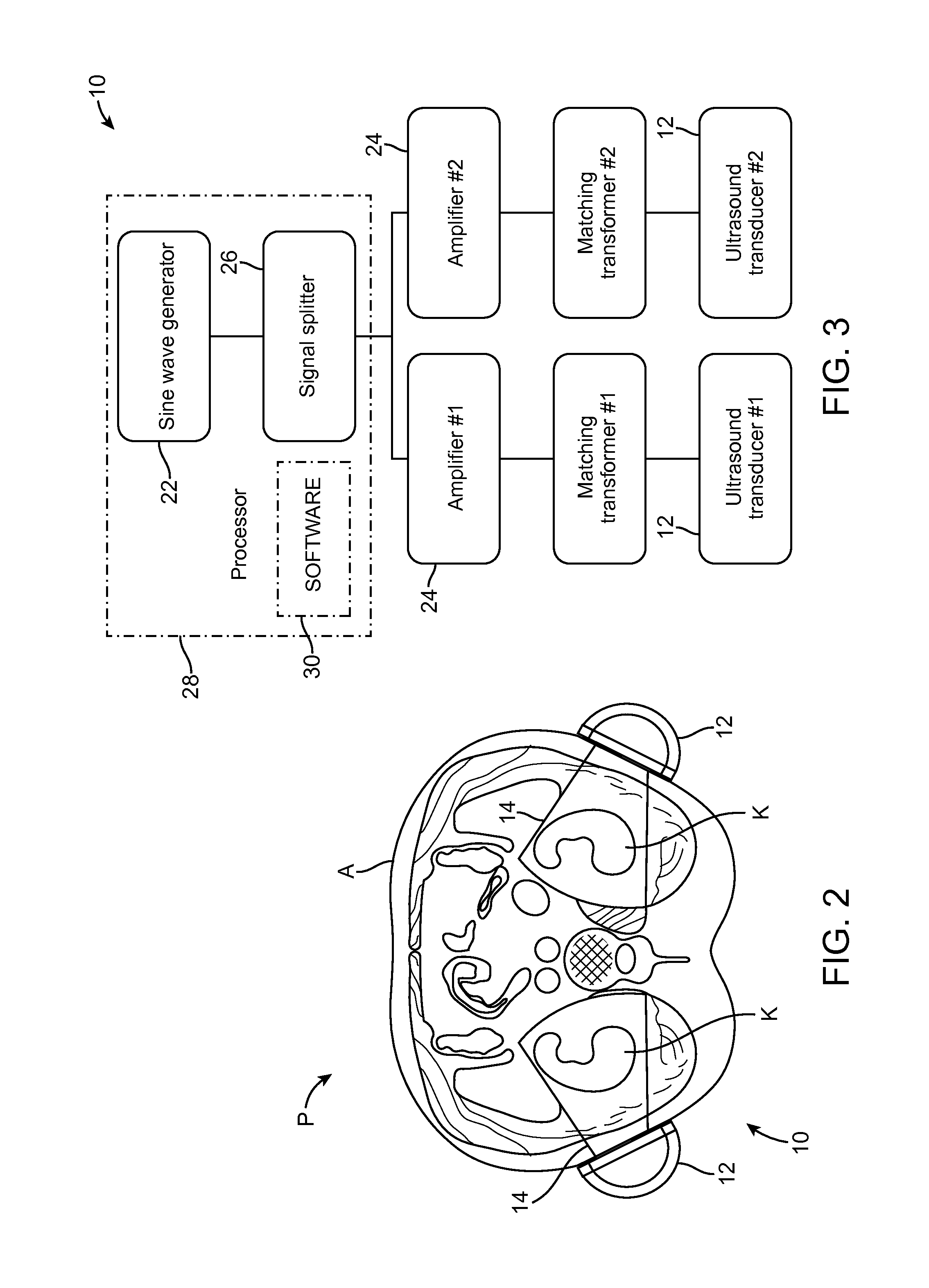[0008]The present invention generally provides improved medical devices, systems, and methods for treatment of patients. Exemplary embodiments of these structures and techniques can be used to help mitigate and / or avoid injury to the kidneys. Advantageously, such injuries may be inhibited by applying cyclical
mechanical pressure energy at low intensities to the kidneys, with the energy often be selectively directed from non-invasive transducers disposed outside the patient. The non-ablative energy levels may be so low as to be more commonly associated with imaging than significant therapeutic effects, thereby facilitating safe penetration through intervening tissues and throughout much or all of the tissue of the kidneys. While the energy will typically comprise,
low frequency ultrasound energy, alternative embodiments may employ low intensity
shock wave energy or the like. The energy will often induce the generation and / or release of
nitric oxide, thereby enhancing
perfusion and ameliorating
tissue damage. Superimposed micro and
macro duty cycles may help avoid thermal and other injury to tissues of the patient during treatment times that may extend from more than about 15 minutes to as much as 6 hours or more. Bilateral treatments are facilitated by a support structure that orients at least one
transducer toward each kidney, and the treatment times may overlap (though not necessarily completely) with a
dialysis procedure. Patients having compromised kidney function such that they would not otherwise meet established criteria for
contrast imaging may be able to safely undergo life-preserving contrast image-guided therapies through the application of appropriate energy before, during, and / or after imaging; often without having to resort to overnight hydration or the like prior to administration of contrast agents.
[0010]In another aspect, the invention provides a method for treating a patient. The patient has first and second kidneys, and is subjected to an imaging procedure including administering of nephrotoxic contrast agent associated with a potential injury of the kidneys. The method comprises transmitting cyclical mechanical pressure energy from a first
transducer selectively to the first kidney. The cyclical mechanical pressure energy is also transmitted from a second transducer selectively to the second kidney. The energy is transmitted to the kidneys for a
treatment time period corresponding to a time of administering the nephrotoxic contrast agent so as to inhibit the potential injury to the kidney.
[0014]In yet one more aspect, the invention provides a method for treating a patient. The patient has a tissue subject to injury, and the method comprises transmitting
low frequency ultrasound energy from a transducer to the tissue. The energy is transmitted to the tissue during a
treatment time period with a treatment
energy level per a first
duty cycle and a second
duty cycle. The first
duty cycle has a first repetition frequency and the second duty cycle has a repetition frequency different than the first duty cycle. The second duty cycle being superimposed on the first duty cycle. The
treatment time period and
energy level being sufficient to mitigate the injury to the tissue.
[0015]In another
system aspect, the invention provides a
system for treating a patient. The patient has tissue subject to injury. The
system comprises a transducer configured to selectively direct
low frequency ultrasound energy to the tissue. A power is source coupled to the transducer, the power source configured to energize the transducer for a treatment time period and with a treatment
energy level per a first duty cycle and a second duty cycle. The first duty cycle has a first repetition frequency and the second duty cycle having a repetition frequency different than the first duty cycle. The second duty cycle is superimposed on the first duty cycle, and the treatment time period and energy level are sufficient to mitigate the injury to the tissue.
[0016]In many embodiments, the treatment energy level will be insufficient to induce
ablation of the kidney. When nephrotoxic contrast agent agents or the like will be administered, potentially resulting in acute and / or progressive deterioration in
renal function, the treatment time will often be within a day of the imaging procedure so that the energy mitigates
nephrotoxicity of the contrast agent such that the acute and / or progressive deterioration is inhibited. Advantageously, even though the patient does not meet a kidney function criteria threshold for receiving contrast media, the application of the energy may alter the threshold so as to allow the imaging procedure to be performed. For example, a patient with an estimated Glomerular
Filtration Rate (eGFR)
score below 60 (indicating kidney damage) might otherwise be subjected to hydration, significantly delaying treatment. A patient with an eGFR
score below 45 might otherwise be denied a therapy that involves the use of contrast media. With application of the energy before, during, and / or after administration of the contrast media the procedure may be allowed to proceed before the time that would otherwise have to be dedicated to hydration was completed. Hence, hydration delays may be decreased or avoided altogether, and
imaging procedures may be performed on patients that otherwise would not yet meet the kidney function threshold.
 Login to View More
Login to View More  Login to View More
Login to View More 


